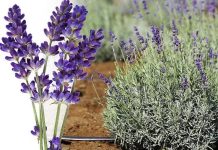If you want to create a warming and flavorful blend, be sure to prepare this mixture! It brings together four staple ingredients, each with a rich history and a powerful presence in kitchens across the globe. This simple combination is a testament to how some of the most basic elements can come together to create a truly remarkable concoction.

Ingredients:
- 1 lemon
- 200 grams of ginger
- 2 cloves of garlic
- 1 tablespoon of honey
Preparation:
- Grate the ginger and garlic.
- Cut the lemon and squeeze out its juice.
- Mix all ingredients together. Place the resulting mixture in a jar and leave it in the refrigerator.
How to take it: Take 1 teaspoon of the mixture every day.
The Global Journey of Ginger
Ginger’s journey from a humble root to a global culinary powerhouse is a story spanning thousands of years. Originating in Maritime Southeast Asia, this versatile rhizome was one of the first spices to be exported from the region, making its way across the Indian Ocean to India, and then through the spice trade routes to the Roman Empire. By the Middle Ages, it was a highly sought-after commodity in Europe, valued for its pungent and spicy flavor profile.
Today, ginger is a staple in countless cuisines. In Asian cooking, it is a foundation for many dishes, from savory stir-fries and curries to sweet desserts and beverages. The Indian subcontinent uses it extensively in masalas and chai, while in Japan, pickled ginger (gari) is a palate cleanser served with sushi. Beyond the kitchen, ginger’s unique flavor makes it a popular ingredient in drinks like ginger ale and Moscow mules. Its distinctive aroma and fiery kick have secured its place as a cherished element in both sweet and savory applications.
The Power of the Humble Garlic
Garlic, with its strong, unforgettable aroma and flavor, has a history as long and storied as civilization itself. Cultivated for over 7,000 years, it is believed to have originated in Central Asia before spreading to the Middle East and then to the Mediterranean. Ancient Egyptians revered garlic, placing it in the tombs of pharaohs, while Greek and Roman soldiers consumed it for what they believed was a source of strength and courage.
As a culinary ingredient, garlic is unmatched in its versatility. It forms the base of many national cuisines, from the Italian soffritto and Spanish sofrito to the French mirepoix. It can be used raw, minced into dressings and dips for a sharp bite, or cooked, where its flavor softens and sweetens. Roasted garlic becomes a mellow, creamy spread, while sautéed garlic adds a fragrant depth to almost any dish. Its ability to transform and enhance other flavors has earned it a permanent place in kitchens worldwide, proving that a little can go a long way.
The Sweet History of Honey
Honey, the golden elixir of bees, is one of the oldest sweeteners known to humankind. Early humans were likely drawn to its sweetness, and ancient cave paintings in Spain, dating back 8,000 years, show figures collecting honey from beehives. Throughout history, honey has been a symbol of healing, purity, and sweetness in numerous cultures. It was used as a form of currency in ancient Rome and a sacred offering in ancient Egypt. Its enduring appeal lies in its natural production and its complex flavor profile, which can vary widely depending on the type of flower the bees visited.
From a culinary perspective, honey is incredibly adaptable. It serves as a natural sugar substitute, a key ingredient in baked goods, and a glaze for savory meats. In many cultures, it is drizzled over desserts, cheeses, and yogurts. Its ability to blend with other flavors, from the zest of a lemon to the spice of ginger, makes it a valuable component in both simple and sophisticated recipes. The practice of infusing honey with other ingredients is an ancient tradition, celebrating the way its sweetness can carry and balance powerful flavors.
The Citrus Star: A History of the Lemon
The lemon, a small but mighty citrus fruit, has a relatively recent but dramatic history in the culinary world. Believed to have originated in Assam, a region in northeast India, its journey to the Mediterranean and the Americas was a long one. Arabs introduced the fruit to Spain and North Africa around the 11th century, but it wasn’t until the Renaissance that it became widely cultivated in Europe. Its tart, acidic flavor was quickly appreciated for its ability to cut through richness and brighten dishes.
Today, the lemon is an indispensable part of global gastronomy. Its juice is a key component in everything from salad dressings and marinades to refreshing beverages. Lemon zest, rich in essential oils, adds a vibrant and fragrant element to cakes, cookies, and custards. The fruit’s acidic nature makes it a crucial ingredient for preserving food and tenderizing meat. Its role in balancing flavors—adding brightness to a savory dish or sharpness to a sweet one—is what makes it a chef’s best friend.
A Harmonious Blend: The Synergy of Four
The true magic of this mixture lies not in any single ingredient, but in the harmony of all four working together. The fiery spice of ginger and the pungent heat of garlic are beautifully balanced by the zesty tartness of lemon and the soothing sweetness of honey. This is a classic example of flavor synergy, where the sum of the parts is greater than the whole. The resulting blend is a vibrant, complex tapestry of tastes that reflects centuries of human appreciation for these four remarkable ingredients. From ancient trade routes to modern kitchens, they have each played a vital role, and their combination here celebrates a simple, yet profound, tradition of flavor.













